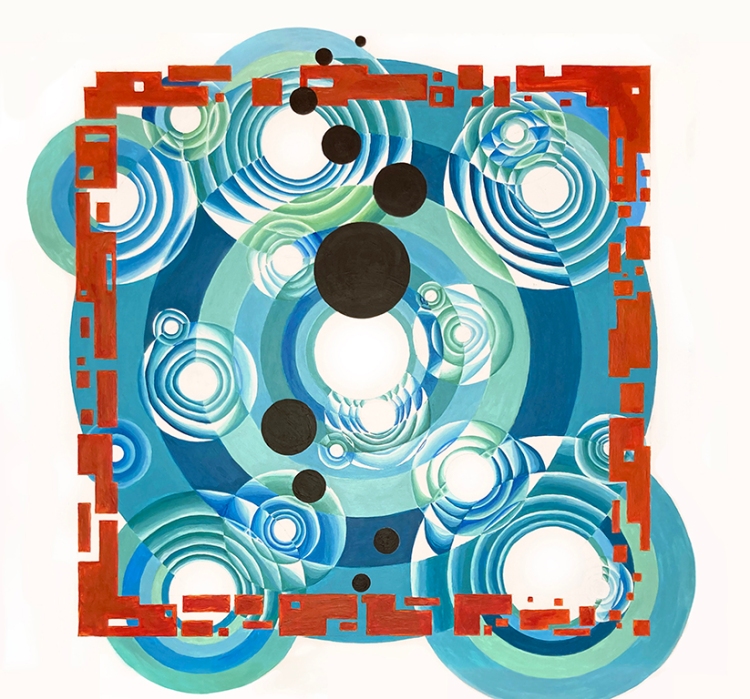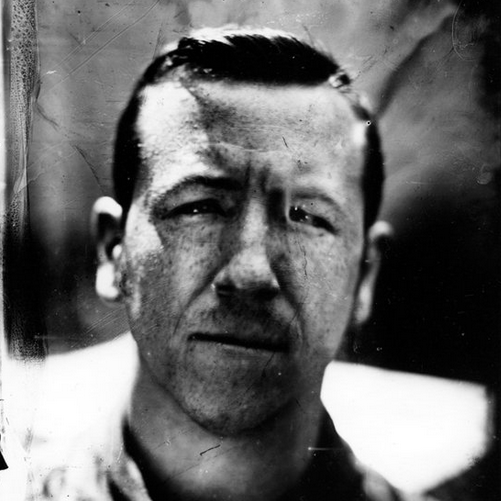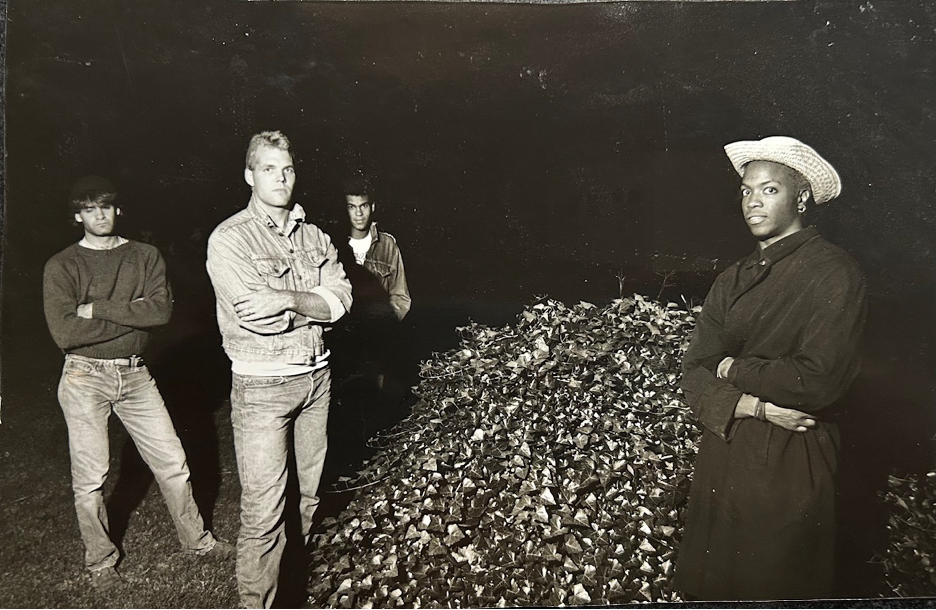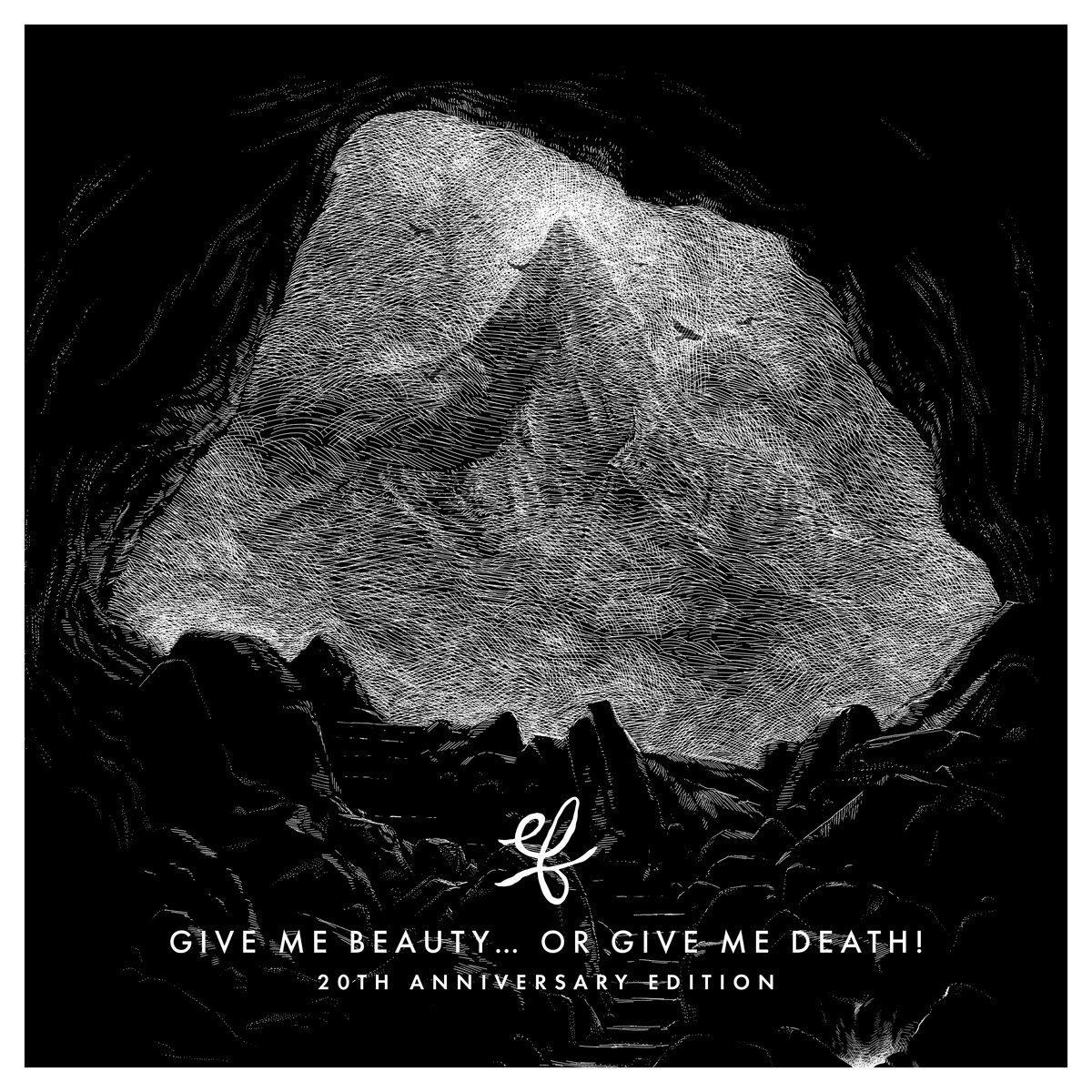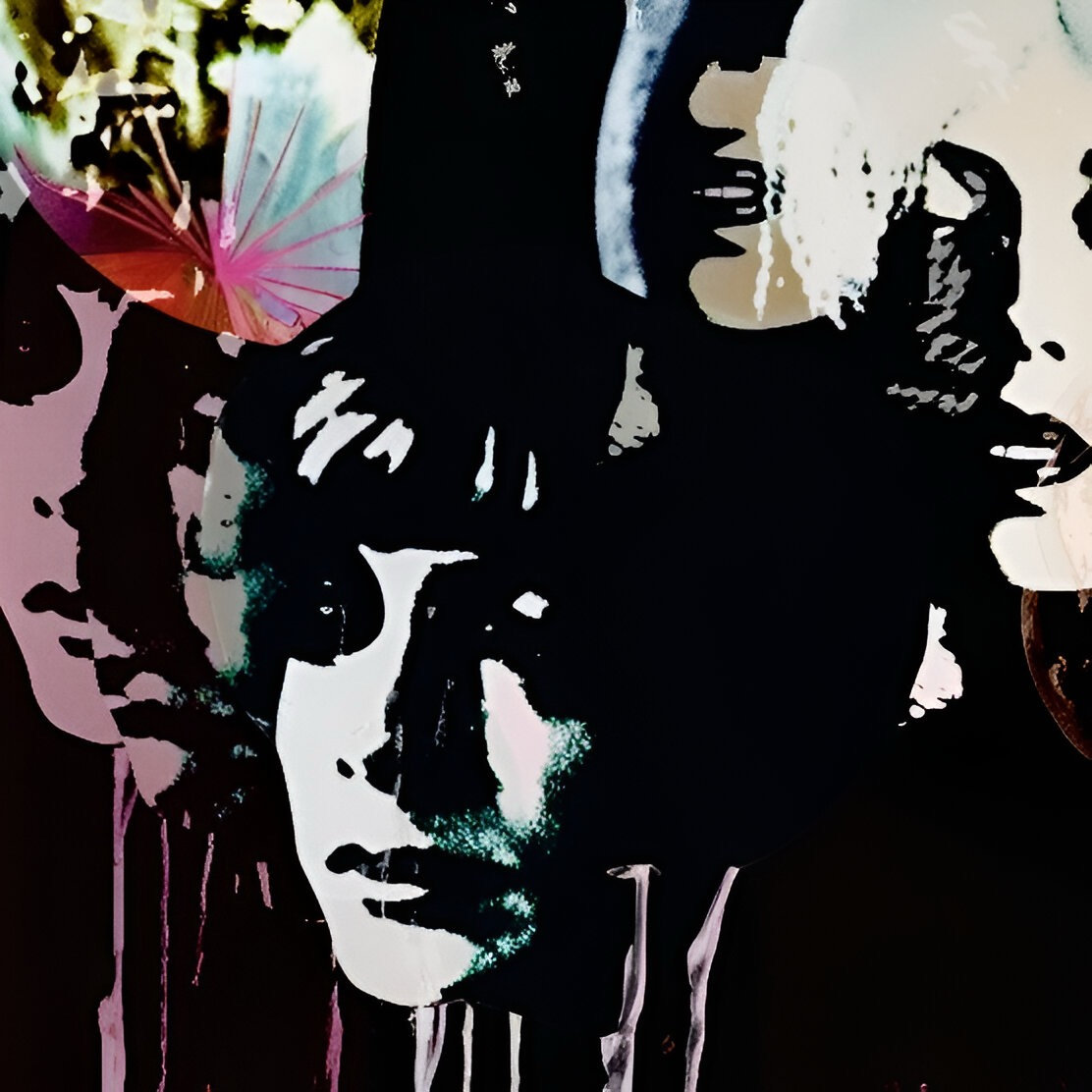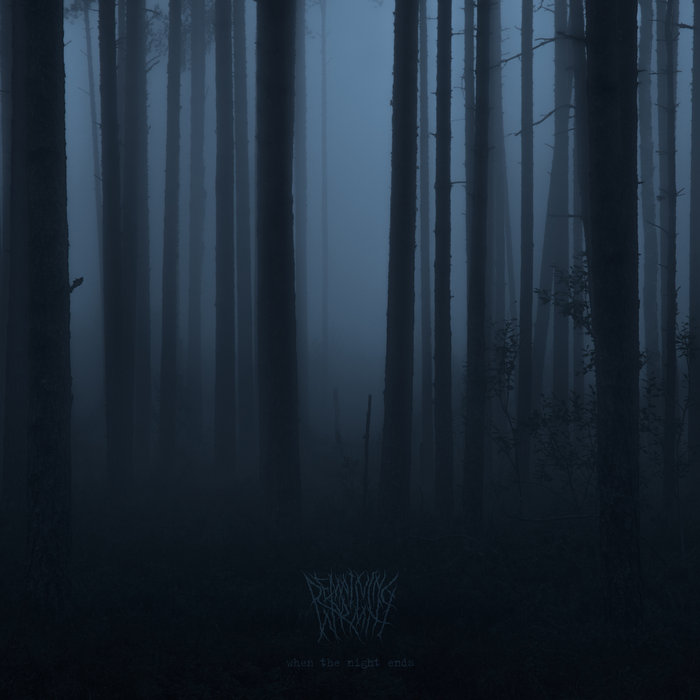Fusion, like any generic label, has had its many inflections; and, like any musical innovation, it has suffered from its share of commodification. Before attaining critical bugbear status, however, fusion encapsulated an important advance in the syncretist history of modern music—call it “jazz,” “world,” or just plain “people music.” Infused with the countercultural electricity of the late 1960s and 70s, fusion loudly demolished cultural barriers, further widening the scope of musical collaboration and improvisation in the process. Such generative spirit still thrives in jazz-metal enclave Titan to Tachyons, whose sophomore LP Vonals is an audacious experiment in participatory sound.
Hold up. You don’t know TtoTs? Well, take reigning occupant of the Imperial rhythmic throne and wearer of the broken crown of Liberty, Kenny Grohowski; pair him with simpatico Mr. Connect himself, Matt Hollenberg, on bass Vee-Eye; invite punk-jazz stalwart Trevor Dunn to sit in on bass and then have the commonsense decency to ask him, “So, like, you wanna join the band?” Finally, refract all that through the prismatic vision of Stargate-keeper Sally Gates, whose cosmic guitar has strung itself through death metal and jazz ensembles alike, and you’re bound to have some galactic experiences. (Gates, a New Zealand native, is also one of three featured artists commissioned for this year’s Wellington Jazz Festival, she’s an inventive visual artist—gaze upon that album art!—and it’s rumored she’s somewhat of a burgeoning TV star.) I’m assuming you’re still with me. And don’t say I never did you any favors.
You’re probably ready for the music, but first—a concept. Vonals derives its name from perceptual experiments in the late-1960s work of Franco-Hungarian Op Art paragon, Victor Vasarely, many of which feature repeating lines and contrasting color values proportionally modulated to create kinetic visual effects and illusions. I present Exhibit A, a band photo by Naeemah Z. Maddox.
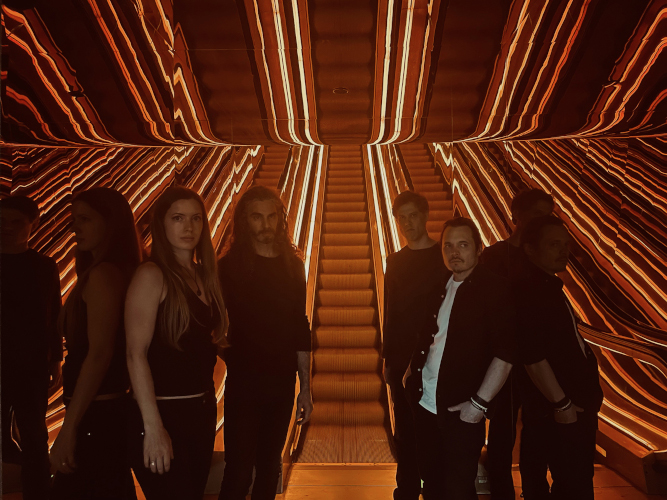
Assuming you can look beyond Mr. Dunn’s sexy smolder (Yo, someone get that man a hat, like a really hip one. Pronto!), you’ll notice how the very same lines projecting the band outward draw you inward, upward or downward all at once. It’s your eye that brings the movement—through the act of seeing—your participation that completes the effect. A vonal is an invitation, a throughline, your way in. Exhibit B: Gates often wears a Pikorua fashioned of sacred pounamu stone around her neck. A powerful Maori symbol for connection, its “twist” evokes the eternal confluence or conundrum of two people, two cultures, spirit and flesh. These are helpful metaphors for what TtoTs are about on Vonals. This music blossoms through engagement and, no matter the involved intricacy of the puzzle, like the ant marching the Möbius strip, if you only choose your way in, you’ll soon be traversing an infinite path with only one surface and one edge in all directions.
Vonals is a “jazz”-forward record and I am here for it. Their debut, Cactides (2020), set a high bar for inventive guitar play and heady extrapolations while never relinquishing the fun of a good hang. For all their weird squiddy writhe, those songs concentrated around clear, loud, singable hooks, often played in unison, to produce a guitar-driven 70s progressive rock sheen. Bang it in your whip, no matter the state of repair; it’s a great time. This time around, Gates has opened the songs to more textural interplay with fascinating arrangements—a result, no doubt, of the challenge of balancing many stringed instruments vying for sonic territory. On paper, accommodating two bassists might seem ill-advised, but only recall how Miles Davis would load up his keys and drummers on now-seminal records and you get a clearer picture of creative opportunity. According to the Gatekeeper, “having Trevor and Matt switch between bass, melodic, and soloist roles really opened up the musical possibilities…to write counterpoint and make good use of polyrhythms… In line with a particular theory of consciousness, it all ties together as a symbiotic, nonlocal whole.” Vonals showcases forward-thinking composition and improvisation, but go ahead and get it twisted all you metalheads: this music is meant to be played loud—yes, with jazz proficiency and grace, but also with the vibrant, interactive urgency and delicious sonic decay of live performance in a communal space. Sink into the advance release of “Wax Hypnotic,” performed live at NuBlu, NYC, and you’ll feel what I mean. Vonals has graduated to a new sound of seemingly infinite space and intensified In a Silent Way-aura.
But come on, find your way in! It’s waiting for you. When I was much younger, my dad used to give me impromptu lessons in active listening. Knowing I shared his predilection for guitar hero theatrics, he took care to remind me to engage with other players, to open myself to a broader musical experience. “Next time, follow the drums,” he might say, and I’d discover different delights venturing down new neural pathways. That’s the fun: there really is no wrong or right way to go about it, just get in it. Take opener “Neutron Wrangler,” with its expressive title conveying both the struggle to maintain elemental coherence and the choreography of dense planetary sounds: you can follow the guitar’s lead as Gates states and then deconstructs themes with her wholly unique Van-Halen-shred-meets-Blood-Ulmer-magic dialogue of lefthand hammering and righthand tapping and attack. (Just wait until you hear set piece “Close the Valve & Wait.”) You can witness atom-splitting when Hollenberg doubles-up on bass vi as a warmer, darker guitar in the left channel to comp or trade solos with Gates’ bright, astral clarity on the right. You can boogaloo to the overtoned flourishes and steady ambient bass pulse or track the snapping, splashing clockwork of the percussion transforming beats inside-out. Any way you choose will be an eventful, disorienting ride. The lush chordal head of “Vacuum Symmetry” updates classic Wes Montgomery harmonic voicings with tastefully skronky bounce, before blooming into an Arabic scalar odyssey. “Critical Paranoia” highlights the band’s genius for stop-start theatrics amidst patiently developed jazz choruses.
But I really must emphasize how interesting this music is. No need to stand on ceremony, just come up to the stage and indulge your curiosity. “Wax Hypnotic” is a standout not least because of its two-note theme! How simply interesting to hear Gates rhythmize two notes, the others harmonizing behind her, before tagging on a looping lick reminiscent of Steve Howe. It’s ingeniously inventive and playfully interactive. In a wholly unanticipated turn, Gates then comps into a loungy theme while Hollenberg blues a solo, and—I’m sorry, I have to say it—it feels just like you imagine dancing with Audrey Horne would. Nothing can really prepare you for “Blue Thought Particles” or its carefully wrapped surprises. Its crinkly King Crimson origami folds back to reveal a natural weave of twangy strings and sequined harmonics—lighting up I don’t know how many chakras at once—before Dunn extrapolates the stankiest bass vamp. This is that scene in the movie where the spaceship locks on a slowglide course toward the event horizon, while wily technicians Gates and Grohowski calibrate their machinery for the climactic finale. The finale? A hilarious blasting, tremolo-picking, mean-mugging competition!
Vonals marks a major advance, but damned if it ain’t just plain fun, propulsive fusion. Titan to Tachyons have thrown you many lines. It’s up to you to discover where they take you.

